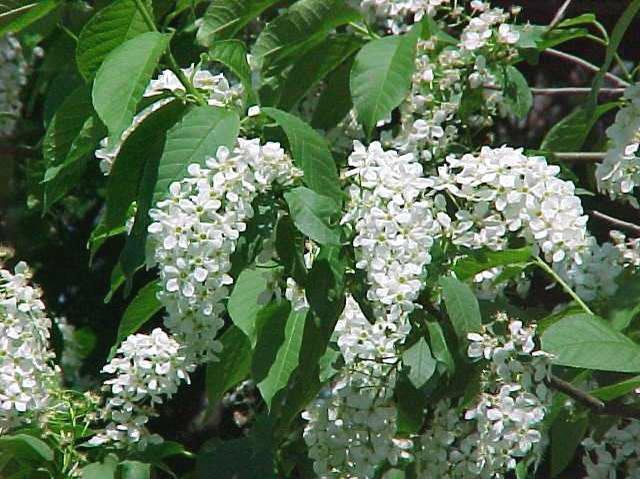Bird cherry (Prunus padus)
Bird cherry
Prunus padus, commonly called European birdcherry, is a deciduous ornamental cherry tree that typically grows 20-40’ tall with a rounded crown. Fragrant white flowers in pendulous 3-6” long clusters (racemes) appear after the foliage emerges in spring. Flowers are followed by astringent, pea-sized, black cherries which ripen in mid-summer. As with the closely-related chokecherry (Prunus virginiana), the fruit is extremely bitter to humans but loved by birds. Serrate, dull dark green leaves (to 4” long) are elliptic to obovate. Foliage turns yellow in fall.
Genus name from Latin means plum or cherry tree.
Specific epithet is the Greek name of a wild cherry.

Easily grown in average, medium, well-drained soils in full sun to part shade. Adaptable to a wide range of soils.
| Hardiness zone | 3 - 6 |
| Sun light | Full sun to part shade |
| Water | Medium |
| Maintenance | Low |
No serious insect or disease problems. Potential diseases include leaf spot, canker and black knot. Potential insects include aphids, scale, borers and to a lesser degree tent caterpillars.
Spring flowers are the best ornamental feature. Medium-sized tree for sunny landscape areas. Street tree.
| Common name | Bird cherry |
| Botanical name | Prunus padus |
| Plant type | Tree |
| Family | Rosaceae |
| Hardiness zone | 3 - 6 |
| Water | Medium |
| Maintenance | Low |
| Flower color | White |
| Flowering period | April - May |
| Height | 20 - 40 ft. |
| Width | 20 - 40 ft. |